15 Best Low Growing Perennials for Ground Cover
- Creeping Phlox (Phlox subulata) – This stunning spring bloomer creates a carpet of pink, purple, blue, or white flowers that reach just 4-6 inches tall. Creeping phlox thrives in full sun to partial shade and spreads 2 feet wide, making it perfect for covering slopes and garden edges.
- Lamb’s Ear (Stachys byzantina) – Known for its soft, silvery-gray foliage that grows 6-8 inches tall, lamb’s ear adds textural interest to any garden. It’s drought-tolerant, deer-resistant, and spreads gradually to fill spaces between stepping stones or along pathways.
- Sedum (Stonecrop) – Low-growing sedum varieties like ‘Dragon’s Blood’ and ‘Angelina’ form dense mats of colorful foliage that reach only 3-6 inches in height. These succulents thrive in poor soil conditions and offer spectacular fall color changes.
- Ajuga (Bugleweed) – This rapid-spreading ground cover produces spikes of blue, purple, or white flowers in spring above glossy foliage that’s often variegated or bronze-tinted. Growing just 6 inches tall, ajuga thrives in shade to part sun and suppresses weeds effectively.
- Thyme (Thymus) – Creeping thyme varieties create aromatic carpets just 2-4 inches tall that release their scent when stepped on. With tiny purple, pink, or white flowers, varieties like woolly thyme and lemon thyme work beautifully between pavers or in rock gardens.
- Lithodora (Lithodora diffusa) – This evergreen ground cover produces intense blue flowers from spring through summer. Growing 6-12 inches tall and spreading up to 2 feet, lithodora prefers well-drained soil and partial shade in hot climates.
- Sweet Woodruff (Galium odoratum) – Perfect for shady spots, this 6-8 inch tall ground cover features whorled green leaves and delicate white spring flowers. It spreads by rhizomes to form a dense carpet and emits a pleasant vanilla-like scent when crushed.
- Dianthus (Pinks) – These compact perennials grow 6-10 inches tall with blue-green foliage and produce richly scented flowers in shades of pink, red, and white. They’re perfect for rock gardens and border edges, performing best in full sun.
- Mazus (Mazus reptans) – This ultra-low grower reaches just 2 inches tall while spreading up to 15 inches wide. Mazus produces delicate purple or white flowers in late spring and tolerates light foot traffic, making it ideal between stepping stones.
- Heuchera (Coral Bells) – Modern varieties offer stunning foliage in purple, caramel, silver, and lime green hues. Though taller than some ground covers at 8-12 inches, their colorful leaves provide year-round interest with delicate flower spikes in summer.
- Iberis (Candytuft) – This evergreen perennial forms dense mounds 8-12 inches tall covered with pristine white flowers in spring. Its spreading habit makes it excellent for cascading over walls or edging sunny borders.
- Aurinia (Basket of Gold) – Reaching 6-12 inches tall, this drought-tolerant ground cover erupts with bright yellow flowers in early spring. Its silvery-gray foliage remains attractive after blooming, and it thrives in poor, well-drained soil.
- Veronica (Speedwell) – Mat-forming varieties like ‘Georgia Blue’ grow just 4-6 inches tall and spread up to 18 inches wide. These vigorous plants produce blue, purple, or pink flowers from spring through summer and adapt to various soil conditions.
- Alyssum montanum (Mountain Gold) – Unlike annual alyssum, this perennial variety grows 4-6 inches tall and spreads to form a drought-tolerant mat of gray-green foliage topped with fragrant yellow flowers in spring.
- Cerastium (Snow in Summer) – This fast-spreading ground cover features silvery-white foliage that grows just 6-8 inches tall. In late spring, it’s covered with small white flowers that create the appearance of snow. It thrives in poor soil and full sun.
How to Choose the Right Low Growing Perennials for Your Landscape
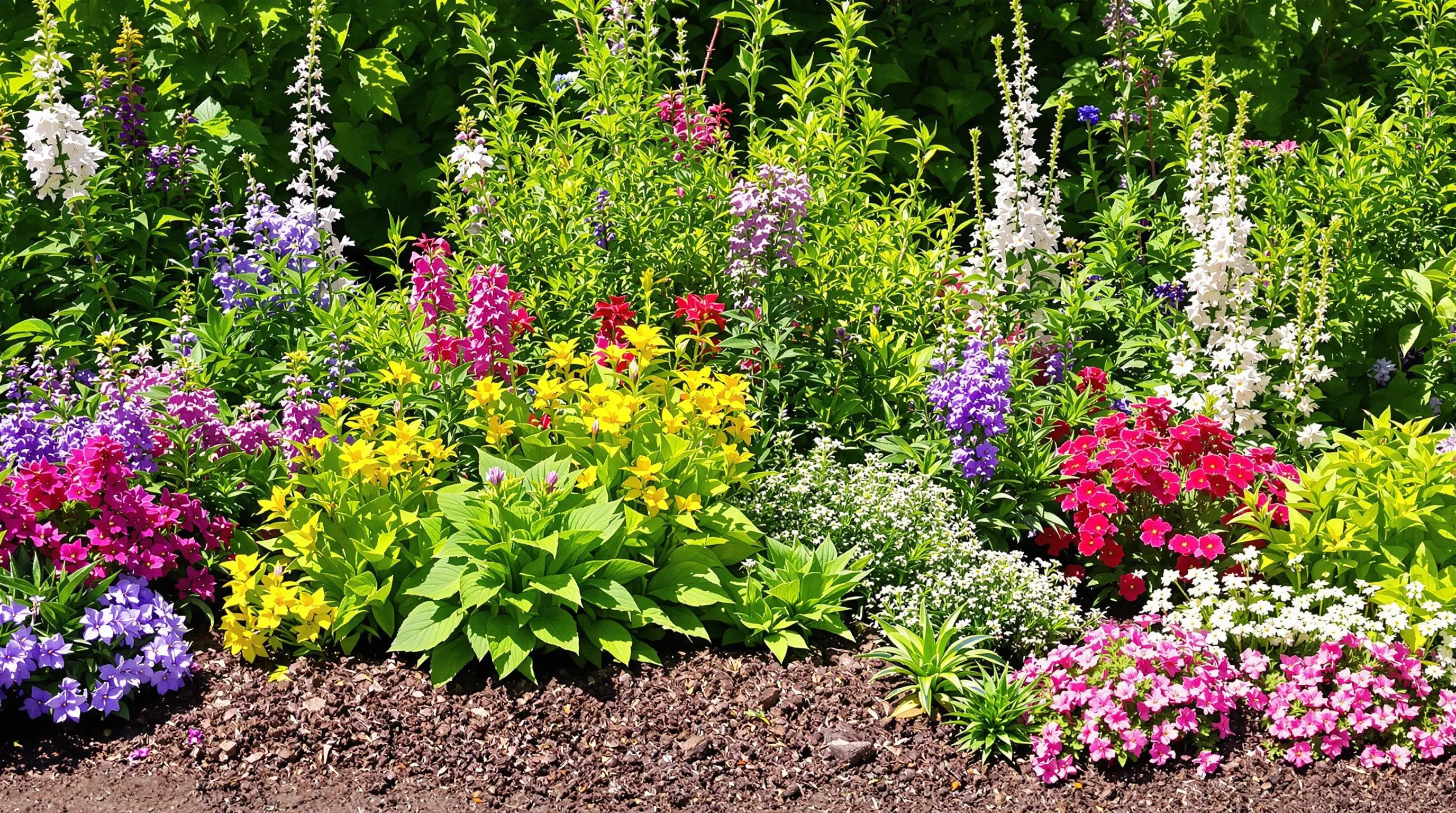
Selecting the perfect low-growing perennials for your garden requires understanding several key factors that influence plant success. By considering these elements carefully, you’ll create a thriving industry that stays beautiful year after year.
Understanding Your Hardiness Zone
Your hardiness zone serves as the foundation for perennial selection success. This climate classification system, developed by the USDA, divides North America into 13 zones based on average annual minimum winter temperatures. Before purchasing any perennials, identify your exact zone using the USDA Plant Hardiness Zone Map. Plants labeled for your zone or lower numbers will typically survive your winters without special protection. For instance, if you’re in Zone 5, plants rated for Zones 1-5 should thrive, while Zone 7 plants might struggle through your winter. Many low-growing perennials like creeping phlox (Zones 3-9) and sedum (Zones 3-10) offer impressive zone versatility, but others have stricter requirements. Always check plant tags or online resources for hardiness information to avoid disappointing losses after the first frost.
Assessing Sunlight and Soil Conditions
The success of your low-growing perennials depends heavily on matching plants to your garden’s exact light and soil conditions. First, monitor your planting area throughout the day to determine its light exposure: full sun (6+ hours direct sunlight), partial sun/shade (3-6 hours), or full shade (less than 3 hours). Many ground-covering perennials like thyme and sedum thrive in full sun, while others like sweet woodruff and ajuga prefer shadier spots. Next, assess your soil type (sandy, loamy, or clay) and drainage patterns. Perform a simple percolation test by digging a 12-inch hole, filling it with water, and checking drainage time—ideal soil drains within 1-3 hours. Most low-growing perennials prefer well-draining soil, but moisture requirements vary significantly. For example, lamb’s ear needs drier conditions, while mazus tolerates more moisture. Consider also testing your soil’s pH, as some perennials like heuchera prefer slightly acidic soil (5.5-6.5), while others like dianthus thrive in more alkaline conditions (6.5-7.5). By matching plants to your existing conditions—or amending soil where necessary—you’ll ensure your low-growing perennials establish quickly and flourish long-term.
Flowering Low Growing Perennials That Add Color to Your Garden
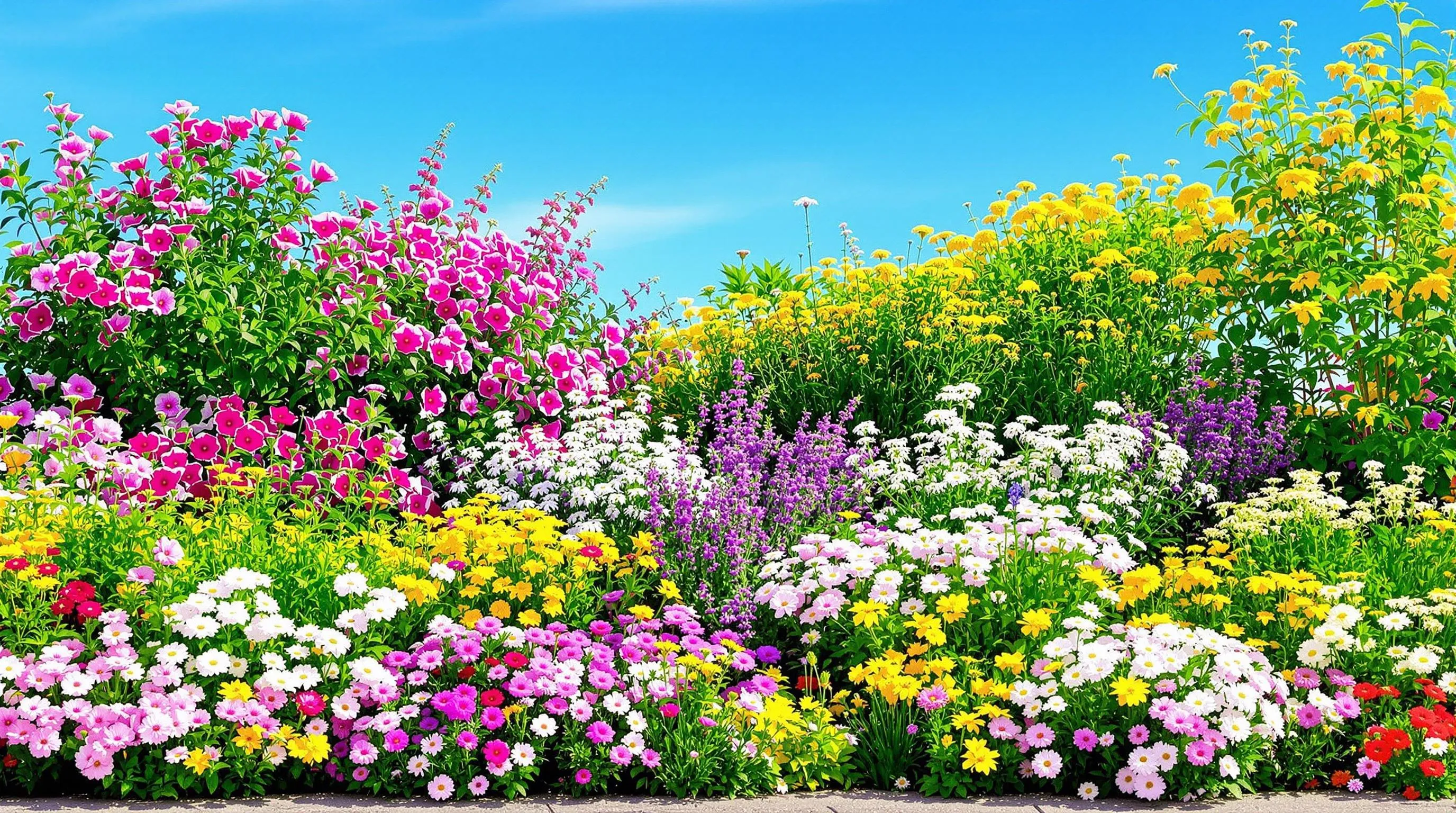
Flowering low-growing perennials offer the perfect solution for adding vibrant color to your garden while maintaining a neat, compact appearance. These versatile plants create stunning visual displays throughout different seasons, making them essential components of a well-designed industry.
Spring Bloomers for Early Season Interest
Spring-flowering low growers kick off the garden season with welcome bursts of color after winter’s dormancy. Creeping phlox (Phlox subulata) creates a carpet of pink, purple, or white blooms in early spring, reaching just 4-6 inches tall while spreading up to 2 feet wide. Aubrieta (Aubrieta deltoidea) delivers cascades of purple-blue flowers from early to mid-spring, perfect for rock gardens and wall crevices. Pasque flower (Pulsatilla vulgaris) produces cup-shaped blooms in purple, red, or white atop 8-inch stems, followed by decorative seedheads. Candytuft (Iberis sempervirens) displays pristine white flower clusters from April to May, forming an evergreen mound 8-12 inches tall. Dwarf bearded iris varieties offer ruffled blooms in many colors at 6-15 inches tall, providing structural interest even after flowering.
Summer and Fall Flowering Varieties
Summer and fall-blooming low growers extend your garden’s color season with remarkable staying power. Coreopsis ‘Nana’ produces golden yellow blooms from June through September on compact 6-inch plants that withstand heat and drought. Hardy geraniums like ‘Tiny Monster’ deliver vivid magenta flowers throughout summer on spreading plants just 8-10 inches tall. Black-eyed Susan ‘Little Goldstar’ (Rudbeckia fulgida) maintains a tidy 14-16 inch height while producing abundant yellow blooms from July through October. Dwarf asters such as ‘Lady in Blue’ or ‘Purple Dome’ provide essential late-season color at 12-15 inches tall, attracting butterflies and pollinators when many other plants have finished blooming. Sedum ‘Firecracker’ develops rich burgundy foliage topped with pink flower clusters in late summer through fall, maintaining interest even into winter with its dried seedheads at just 6-8 inches tall.
Evergreen Low Growing Perennials for Year-Round Appeal
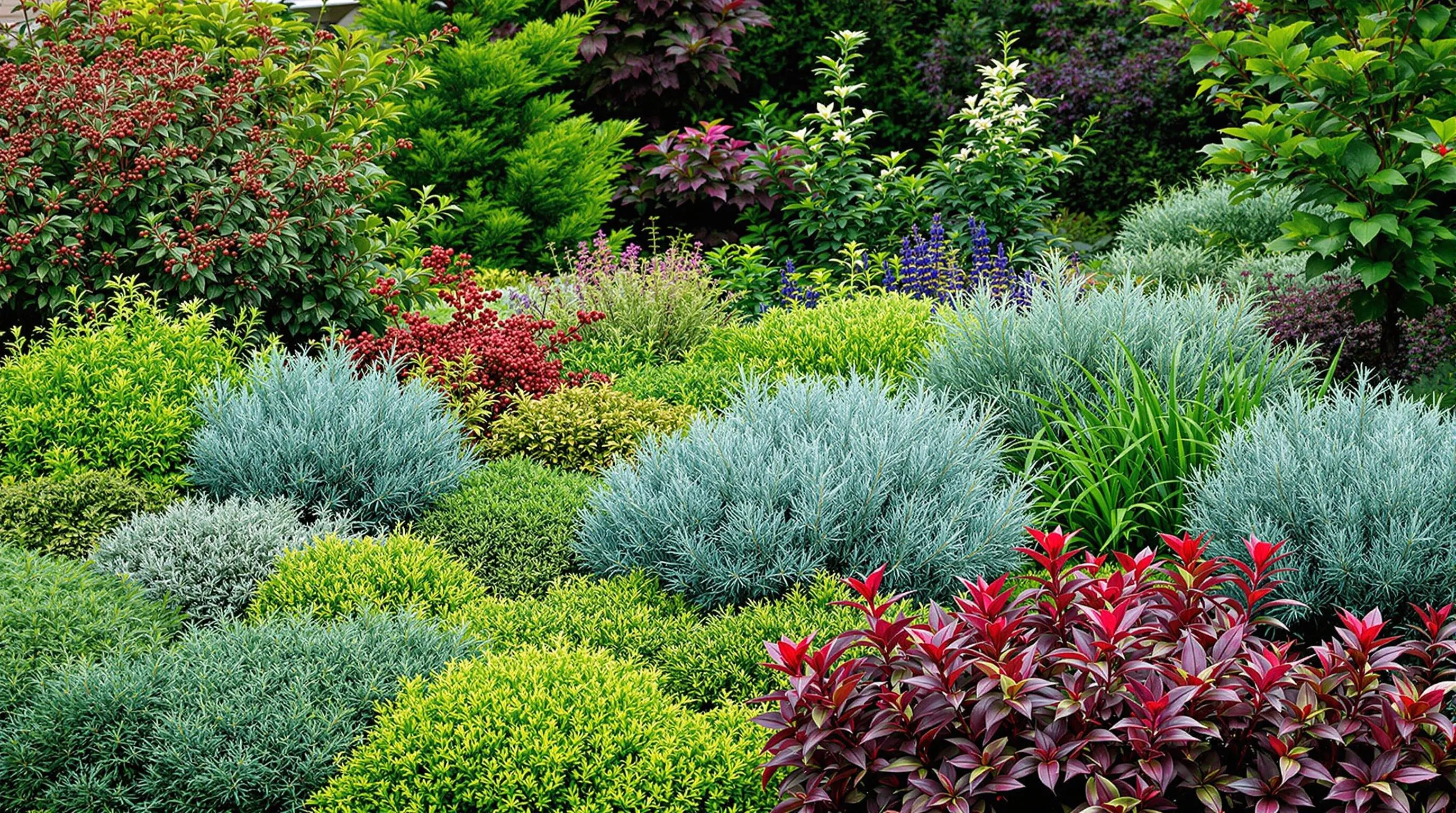
Evergreen low-growing perennials provide constant structure and color in your garden when deciduous plants go dormant. These versatile plants maintain their foliage throughout all seasons, offering lasting beauty with minimal maintenance.
Needle-Leafed Evergreen Perennials
Needle-leafed evergreens bring distinctive texture and year-round color to your industry. Creeping Juniper (Juniperus horizontalis) forms a dense mat only 6-12 inches tall with attractive blue-green foliage that takes on purple tints in winter. Blue Star Juniper (Juniperus squamata ‘Blue Star’) creates a compact mound reaching 1-3 feet tall with striking silvery-blue needles. Dwarf Mugo Pine (Pinus mugo ‘Pumilio’) offers a slow-growing, rounded form that reaches 2-4 feet tall with deep green needles. For shady spots, Japanese Plum Yew (Cephalotaxus harringtonia ‘Prostrata’) spreads 2-3 feet tall with dark green, soft-textured needles. These needle-leafed varieties excel in well-drained soils and provide erosion control on slopes while requiring minimal pruning.
Broadleaf Evergreen Ground Covers
Broadleaf evergreens showcase lush foliage and often feature showy flowers or berries. Bearberry (Arctostaphylos uva-ursi) spreads 6-12 inches tall with leathery green leaves, white spring flowers, and red berries. Wintergreen (Gaultheria procumbens) forms a 6-inch carpet with glossy leaves that turn reddish in winter, producing white flowers and edible red berries. Japanese Pachysandra (Pachysandra terminalis) creates a dense 8-10 inch cover with whorled, serrated leaves ideal for shade. Creeping Mahonia (Mahonia repens) grows 12-18 inches tall with holly-like leaves that develop burgundy tints in cold weather. For sunny spots, try Wall Germander (Teucrium chamaedrys), which reaches 12 inches tall with aromatic, dark green leaves and purple summer flowers. These broadleaf varieties add structure to garden beds while suppressing weeds and protecting soil throughout all seasons.
Drought-Tolerant Low Growing Perennials for Water-Wise Gardens
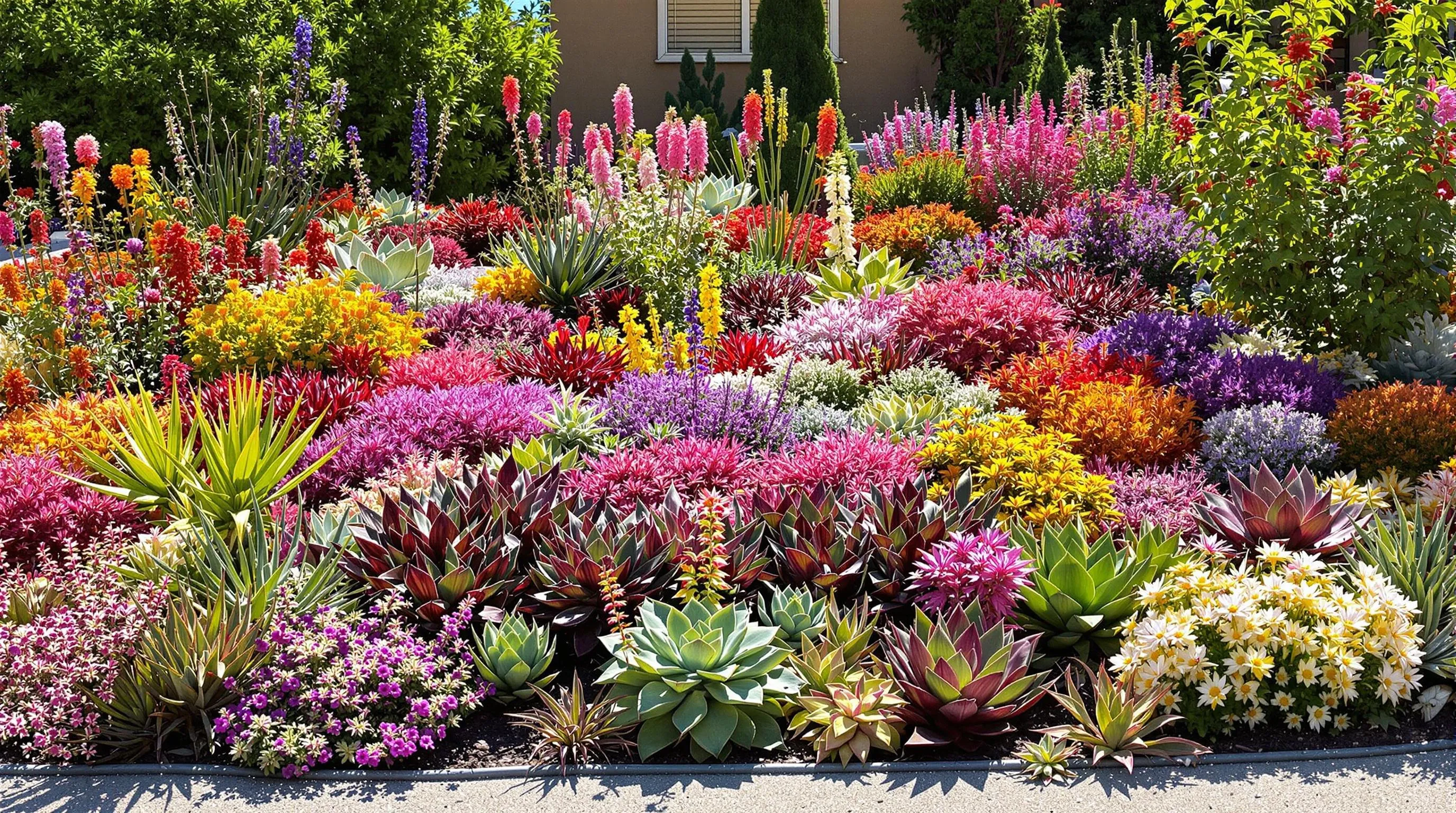
Create an eco-friendly garden that thrives with minimal watering by incorporating drought-tolerant low growing perennials. These water-wise plants not only conserve precious resources but also provide beautiful ground coverage with less maintenance.
Succulents and Sedums for Hot, Dry Areas
Succulents and sedums are perfect low-growing perennials for hot, sun-baked areas of your garden. Sedum ‘Dragon’s Blood’ grows just 4-6 inches tall with spreading red-tinged foliage and vibrant red summer flowers. Sempervivum (Hens and Chicks) forms tight rosettes under 6 inches tall that multiply readily, creating textural carpets in rock gardens and containers. Ice Plant (Delosperma) offers daisy-like flowers in brilliant colors from spring through fall, growing only 3-6 inches tall while tolerating poor soils. Sedum spathulifolium ‘Cape Blanco’ presents silvery-blue rosettes that stay under 4 inches tall, turning pinkish in cold weather. Plant these succulents in well-draining soil with full sun exposure for the best results, and enjoy their fascinating textures and colors with almost no supplemental watering once established.
Native Drought-Resistant Options
Native drought-resistant perennials have adapted to local conditions over thousands of years, making them exceptionally resilient choices for water-wise gardens. Prairie Smoke (Geum triflorum) grows 6-12 inches tall with feathery seed heads resembling smoke after its pink spring flowers fade. Pussytoes (Antennaria) forms dense mats of silvery foliage just 3-6 inches high with charming button-like flowers. Creeping Oregon Grape (Mahonia repens) provides glossy, holly-like evergreen foliage that reaches only 12 inches tall with yellow spring flowers followed by blue-black berries. Prairie Zinnia (Zinnia grandiflora) blooms with sunny yellow flowers throughout summer on 4-8 inch stems. These native options require minimal irrigation once established, attract local pollinators, and create sustainable industry answers that connect your garden to its regional network.
Low Growing Perennials for Shade Gardens
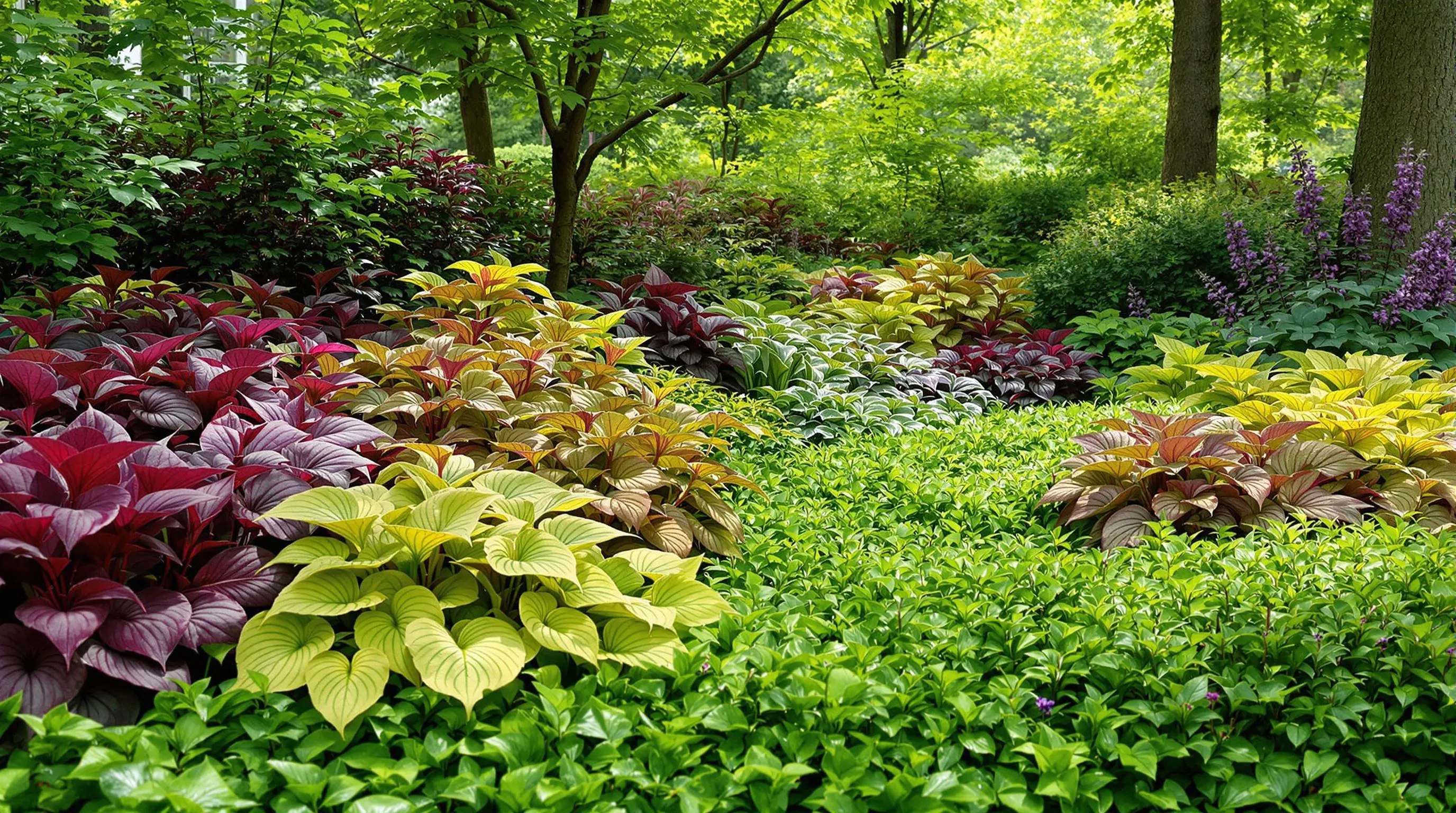
Transforming those dim, challenging spots in your garden becomes effortless with the right shade-loving perennials. These adaptable plants bring life to areas where sunlight is limited, creating lush ground covers and adding visual interest beneath trees or along north-facing foundations.
Woodland Varieties That Thrive in Low Light
Woodland perennials have naturally evolved to flourish in dappled light conditions, making them perfect for shade gardens. Epimedium (Barrenwort) grows just 8-12 inches tall with heart-shaped foliage and delicate spring blooms in white, yellow, pink, or purple. Tiarella (Foamflower) reaches only 6-12 inches with star-shaped flowers on slender stems above attractive maple-like leaves. Asarum (Wild Ginger) forms a dense 4-6 inch carpet of glossy, kidney-shaped leaves with hidden, unusual flowers at soil level. Corydalis solida stays under 10 inches tall, featuring ferny foliage and tubular flowers in purple, pink, or white that appear in early spring. Pachysandra terminalis (Japanese Spurge) creates a reliable 6-8 inch evergreen mat in even the densest shade, requiring minimal maintenance once established.
Colorful Foliage Options for Shade
Vibrant foliage perennials add long-lasting color to shade gardens without relying on flowers. Heuchera (Coral Bells) delivers year-round impact with its 8-12 inch mounds of ruffled leaves in purple, caramel, lime, silver, or nearly black tones. Ajuga reptans (Bugleweed) forms a quick-spreading 4-6 inch carpet with varieties like ‘Black Scallop’ offering deep purple-black foliage. Lamium maculatum (Spotted Dead Nettle) grows 6-8 inches tall with silver-streaked leaves and pink or white blooms from spring through summer. Brunnera macrophylla ‘Jack Frost’ and ‘Silver Heart’ showcase stunning silver-veined foliage on 12-15 inch plants, complemented by blue forget-me-not flowers in spring. Acorus gramineus ‘Ogon’ (Golden Sweet Flag) brings bright golden-chartreuse, grass-like foliage at just 6-10 inches tall, thriving in moist, shaded spots while adding a striking color contrast to darker shade environments.
Using Low Growing Perennials in Rock Gardens and Alpine Settings
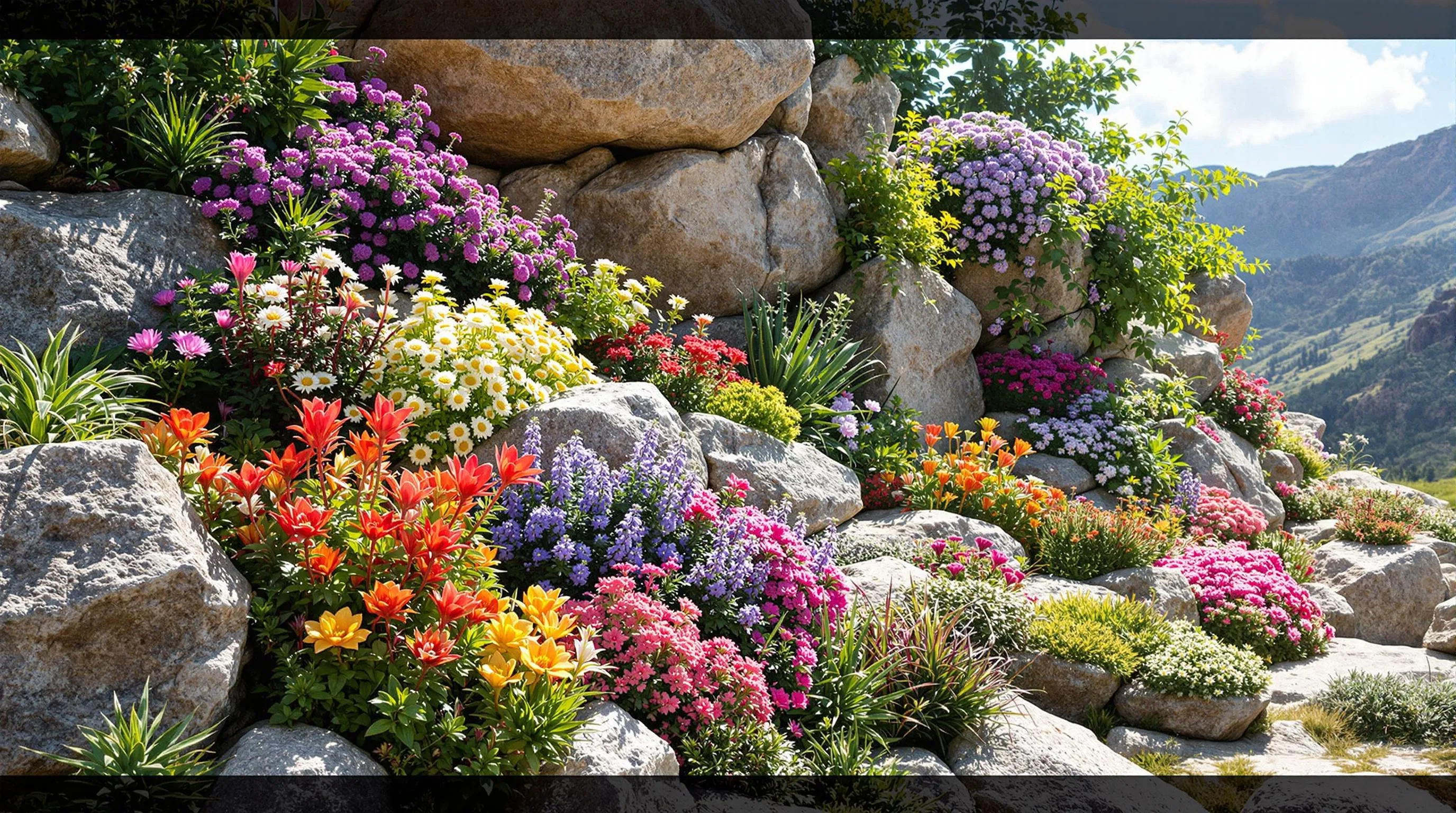
Low growing perennials are ideal companions for rock gardens and alpine settings, where their compact growth habit complements the rugged beauty of stones and creates authentic miniature landscapes. In these specialized garden environments, plants must adapt to challenging conditions including sharp drainage, intense sunlight, and limited soil. Alpine varieties like Saxifraga, Sempervivum, and Armeria maritime thrive in these environments, forming tight mats or rosettes that nestle beautifully between rocks. When designing your rock garden, position plants in crevices and pockets where their roots can access soil while their foliage cascades attractively over stone surfaces. Choose varieties with different blooming periods to ensure year-round interest, combining early-flowering Aubrieta with summer-blooming Dianthus and fall-showing Sedum. The natural-looking combination of weathered rocks and diminutive perennials creates a striking textural contrast that mimics mountain landscapes in a compact garden space. For authentic alpine gardens, incorporate proper drainage by mixing grit and sand into your soil, as these plants naturally grow in lean, fast-draining conditions that prevent root rot during winter months.
Low Growing Perennials That Suppress Weeds Effectively
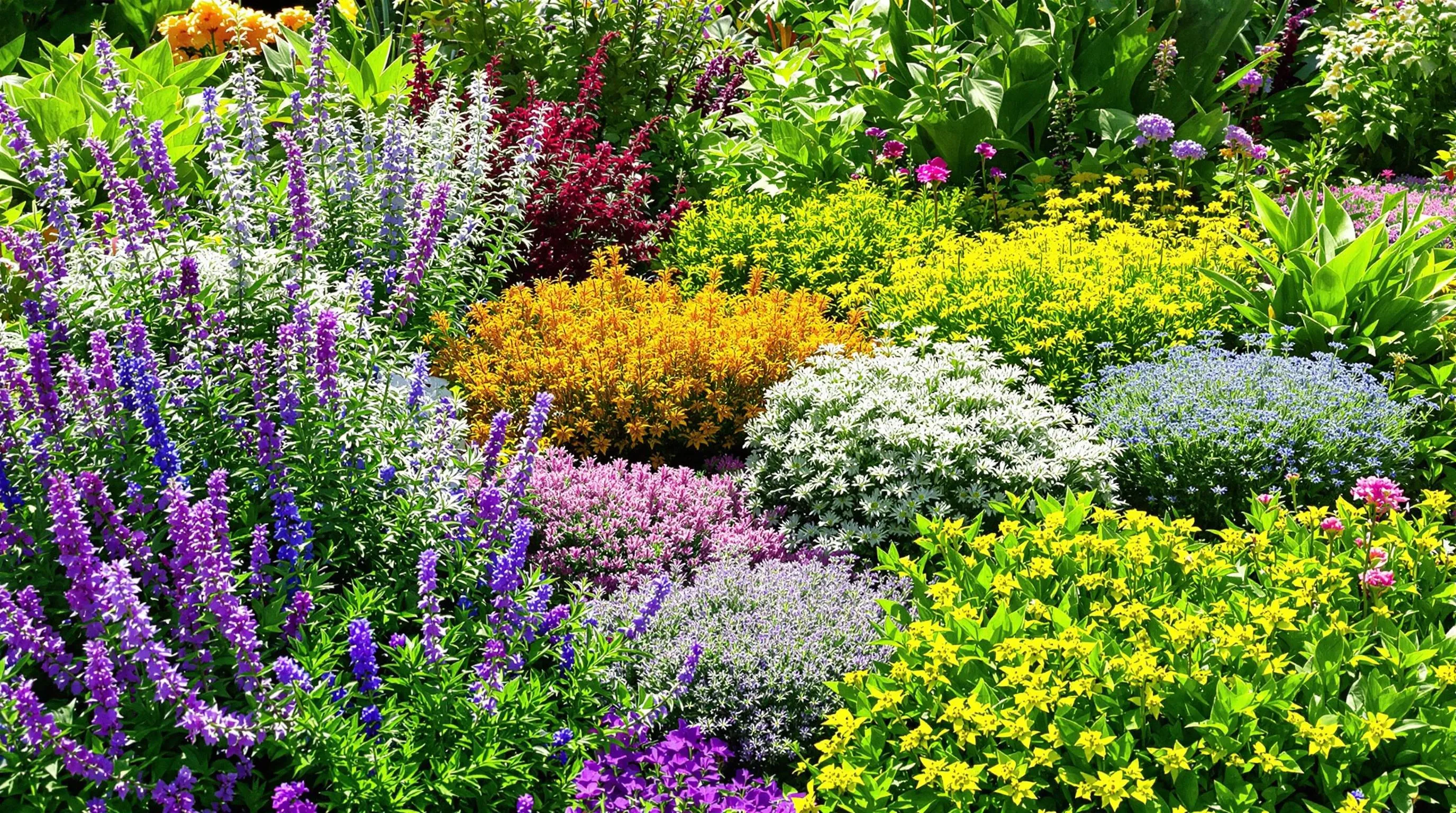
Low growing perennials offer a natural solution to weed problems by creating dense mats of foliage that block sunlight from reaching weed seeds. These ground-covering plants effectively crowd out unwanted vegetation while adding beauty to your garden. Plants like Creeping Thyme form thick carpets that weeds struggle to penetrate, while Lamb’s Ear’s fuzzy, overlapping leaves create a weed-resistant barrier. Ajuga (Bugleweed) spreads quickly with its rosettes of foliage, choking out weeds before they establish. Sweet Woodruff thrives in shady areas where many weeds attempt to grow, its whorled leaves forming an effective green mulch. Sedum varieties like ‘Dragon’s Blood’ create succulent mats that leave little room for invaders. For sunny spots, Hardy Geraniums like ‘Rozanne’ offer spreading habits and dense foliage that suppress weeds throughout the growing season. These weed-suppressing perennials not only reduce your garden maintenance time but also eliminate the need for chemical herbicides, creating a more sustainable and eco-friendly industry.
Deer and Pest-Resistant Low Growing Perennial Options
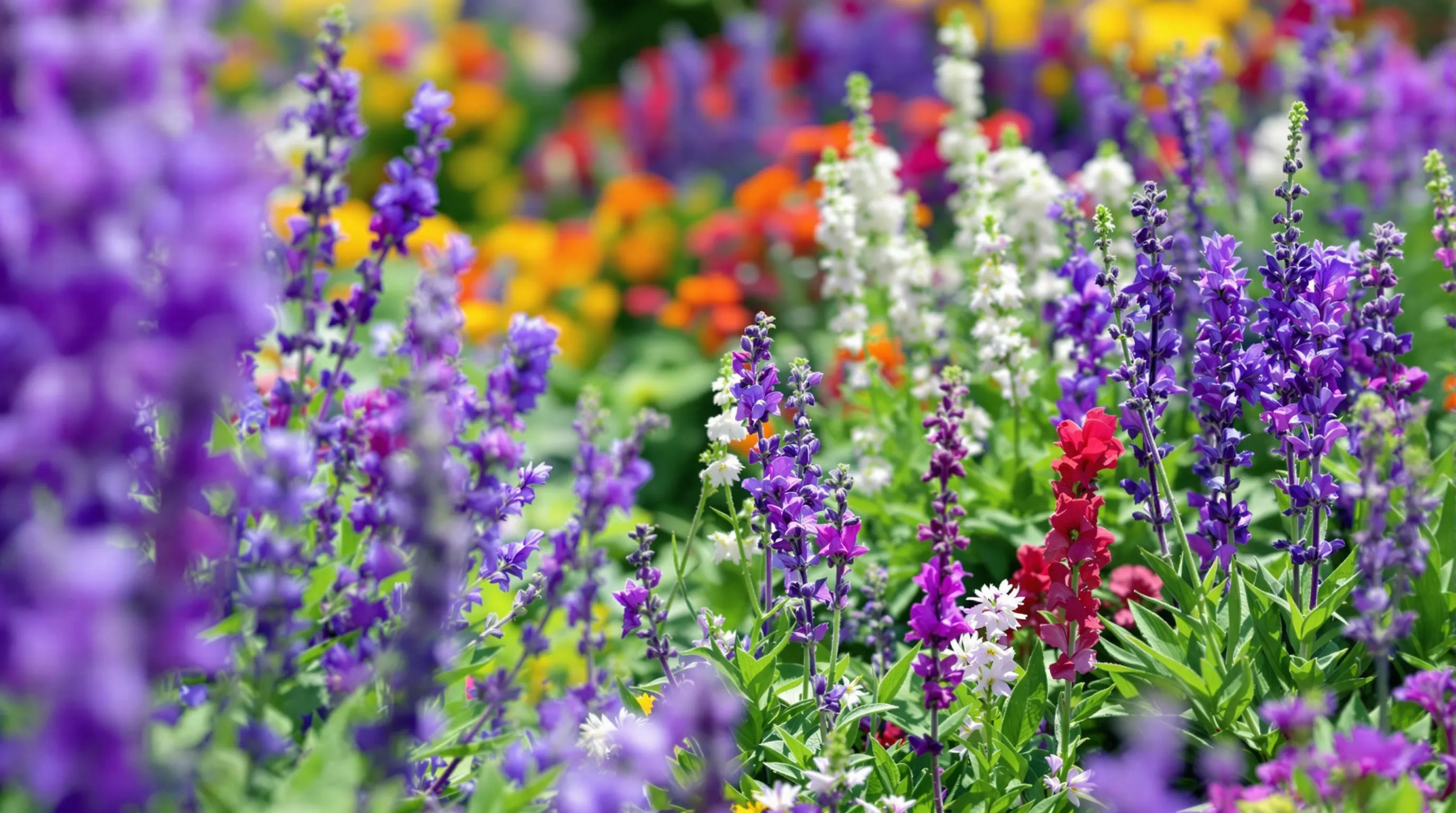
Creating a beautiful garden only to have it decimated by deer and pests can be heartbreaking. Fortunately, many low-growing perennials naturally repel these garden invaders while adding beauty to your industry. Plants like lavender, Russian sage, and yarrow contain strong scents and flavors that deer find unappetizing. Lamb’s ear, with its fuzzy foliage, deters both deer and rabbits due to its texture. Catmint (Nepeta) offers beautiful purple blooms that pollinators love but deer avoid. Hardy geraniums provide colorful ground cover while containing compounds that repel various pests. Hellebores, with their early-spring blooms, remain untouched thanks to their toxic properties. Consider incorporating artemisia, whose silvery foliage contains aromatic oils that naturally repel insects and browsing animals. For sunny borders, try dianthus varieties that combine spicy-scented foliage with attractive flowers. These pest-resistant perennials not only reduce garden damage but also minimize the need for chemical deterrents, creating a more sustainable and low-maintenance industry that stays beautiful season after season.
How to Plant and Maintain Low Growing Perennials
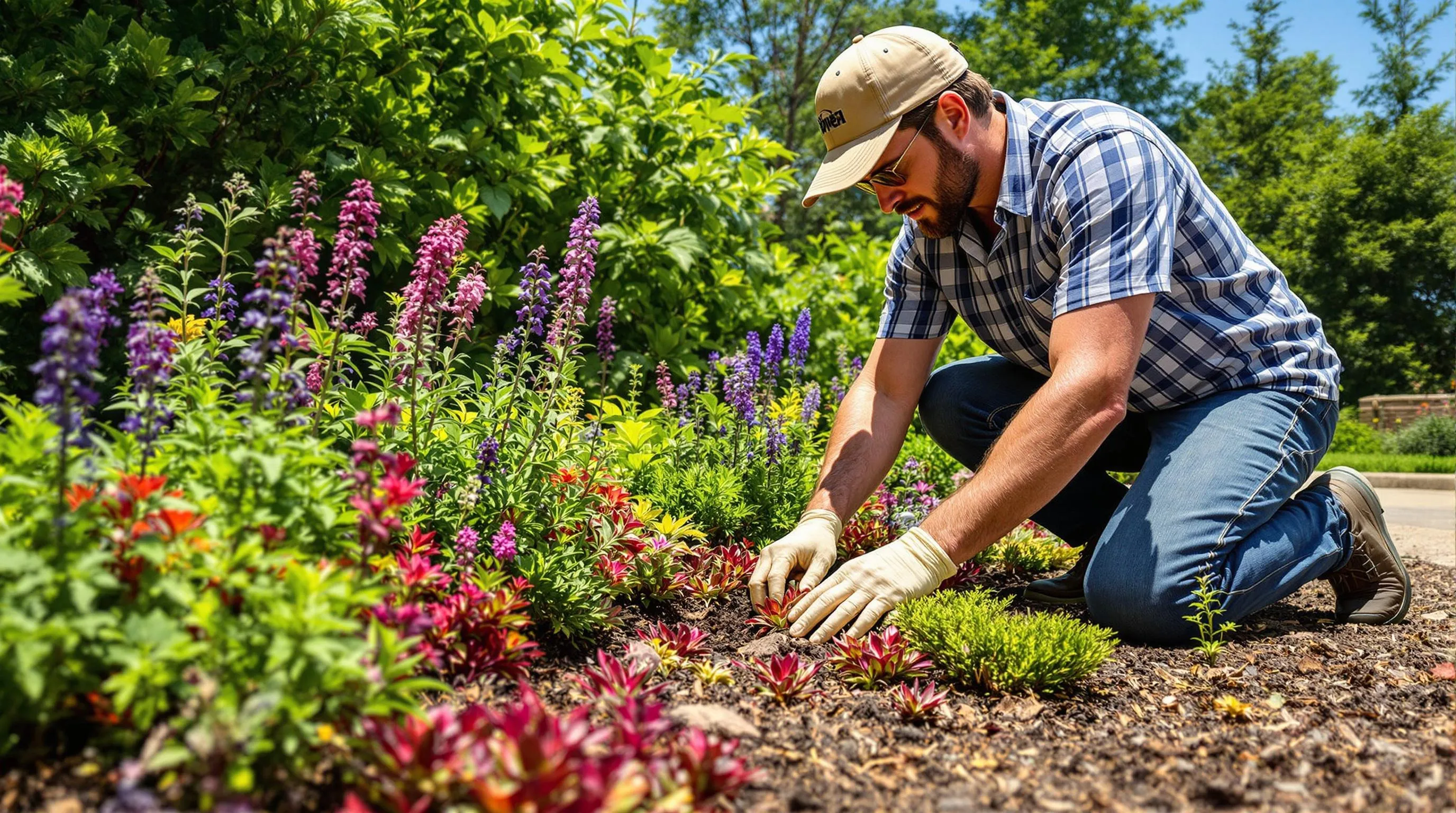
Successfully growing low-maintenance perennials starts with proper planting and consistent care. These resilient plants reward gardeners with years of beauty when established correctly.
Proper Spacing and Planting Techniques
Planting low-growing perennials at the right spacing is critical for their long-term health. Always check plant tags for recommended spacing guidelines—typically 6-12 inches apart for most varieties, depending on their mature spread. Before planting, prepare your bed by removing all weeds and amending the soil with compost to improve drainage and fertility. Dig holes twice as wide as the root ball but at the same depth, as planting too deeply can cause rot issues. After positioning plants, backfill with soil and water thoroughly to eliminate air pockets. Apply a 2-inch layer of mulch around (but not touching) the plant stems to conserve moisture and suppress weeds. For rock gardens or alpine settings, incorporate extra grit or small pebbles into your soil mix to ensure excellent drainage that mimics these plants’ natural habitats.
Seasonal Maintenance Requirements
Low-growing perennials require different care throughout the year to maintain their beauty and health. In spring, remove winter mulch and cut back any dead foliage from the previous year to encourage new growth. Apply a slow-release fertilizer as plants begin active growth, following package directions to avoid over-fertilization. During summer, water deeply but infrequently—about 1 inch per week for most varieties—adjusting for rainfall and allowing soil to dry slightly between waterings. Deadhead spent blooms regularly to promote continued flowering and prevent self-seeding in aggressive spreaders. Fall maintenance includes cutting back perennials that don’t provide winter interest, dividing overcrowded plants, and applying fresh mulch before winter arrives. In winter, most low-growing perennials need minimal care, though evergreen varieties may benefit from protection against drying winter winds in harsh climates. Throughout all seasons, promptly remove any weeds that appear to prevent competition for nutrients and water.
Stunning Combinations: Pairing Low Growing Perennials with Other Plants

Low growing perennials become even more impressive when strategically paired with complementary plants. Creating layered plantings with taller perennials and shrubs adds depth and visual interest to your garden. Try pairing creeping phlox with spring-flowering bulbs like daffodils or tulips for a stunning two-tiered display. For rock gardens, combine drought-tolerant sedum varieties with ornamental grasses like blue fescue to create textural contrast. Edge your flower beds with sweet alyssum or dianthus fronting taller dahlias or coneflowers. Woodland gardens benefit from combining shade-loving ajuga with hostas and ferns for a lush understory. You can also create seasonal interest by mixing evergreen perennials like creeping juniper with deciduous varieties that offer changing foliage colors. These thoughtful combinations maximize your garden’s visual impact while maintaining the practical benefits of ground-covering plants.
Conclusion: Creating a Lasting Landscape with Low Growing Perennials
Low-growing perennials offer an unbeatable combination of beauty functionality and ease of care for any garden space. By selecting the right varieties for your exact conditions you’ll enjoy years of colorful blooms ground coverage and reduced maintenance.
Whether you’re looking to suppress weeds create stunning rock gardens or design a deer-resistant industry these versatile plants have you covered. Their ability to thrive in diverse environments from sunny drought-prone areas to shady woodland settings makes them indispensable garden allies.
With proper planting and minimal seasonal care your low-growing perennials will reward you with expanding beauty year after year forming the foundation of a resilient sustainable industry that evolves and improves with time.





